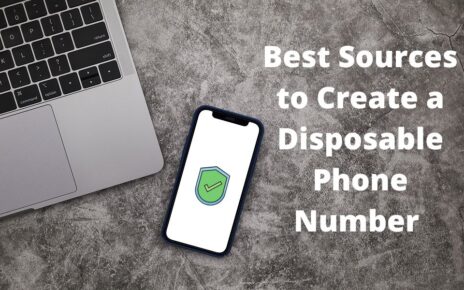Despite the vast use of the Internet, very few people know about how does Internet work, who is actual Internet service provider (ISP), what are tier 3 isp, does Internet work via satellite, etc.
In this article you will learn about the functioning of the Internet, data transmission mediums, and protocols. You will also get to know if there is an owner of the Internet.
Let’s begin with the basics of the Internet and later we will discuss its functioning.
Contents
- 1 What is the Internet?
- 2 How does the Internet Work?
- 3 Internet Data Transmission:
- 4 How long a submarine cable can function and what happens when it breaks?
- 5 Is it efficient to use Submarine Cables for data transmission?
- 6 How does the Internet work in countries without coastal borders?
- 7 How to check the data transmission path?
- 8 Other Components of the Internet-
- 9 Who owns the internet?
- 10 Final Thoughts-
What is the Internet?
In simple words, the Internet is a network of interconnected computers (networks) enabled to communicate by sending and receiving data.
A lot of people think of the Internet and the Web as a single entity. But there is a huge difference between the Internet and the Web. While the Internet is a network of connected computers, the Web is the collection of data we access using the Internet.
The Internet was started in the 1960s as ARPANET (Advanced Research Projects Agency Network) for U.S. Defense Department. Later, in 1983 ARPANET adopted some protocols like TCP/IP and evolved into the modern Internet.
How does the Internet Work?
The whole setup of a Network of Networks (Internet) works by sending/receiving data packets with some rules/protocols over the wired or wireless medium. We will discuss data packets and protocols later. Let’s discuss how data packet transmission work on the Internet.
Internet Data Transmission:
We use the Internet to send and receive data. Data is first broken into data packets by TCP/IP protocols and travels through Submarine cables to reach the server located in some other countries. All the countries are connected by underwater submarine cables, buried in the sea bottom.
Submarine cable, en-laced with the latest fiber-optic technology, fires laser beams at an extremely rapid rate, and data is transmitted at almost light speed.
In simple words, when you send a WhatsApp message or email, data is transmitted all the way through submarine cables to the Server location and later it is routed back to the targeted device.
So, if you send a text over WhatsApp to your friend sitting just beside you, the message will travel all the way to the WhatsApp server in the U.S. through submarine cables and then it will travel back to your friend’s phone.
Read More: What is 5G and how does it work?
Huawei Marine and Equinix sponsor a site, Submarine Cable Map, to display the geographical connection of countries using cables. They have also shared the source code and related data over the GitHub page for public and noncommercial use. You can explore and create your own map as well.
If you are wondering why you can’t see these cables when you visit a beach, that is because these cables are buried deep in the ocean floor and usually open in coastal areas not accessible to the public.
These cables encapsulate thousands of hair-like fiber-optic units to transmit the data.
As per sources, there are almost 1.2 million kilometers of submarine cables connecting the globe and being managed by public and private companies. Primary owners of these Cables are Tier-1 Internet Service Providers (ISP) companies (Like Tata, Reliance Jio). They provide connectivity to Tier-2 and Tier-3 ISPs (like Airtel, Vodafone, and Tikona) at recurring charges.
Tier-2 and Tier-3 companies like Vodafone, Airtel, and Ooredoo buy the cable access and connect the submarine cables with their local telecom towers which ultimately connect us to the internet.
By these facts, we can say the internet is free and we pay only for cables, routers, network towers, and other maintenance.
How long a submarine cable can function and what happens when it breaks?
Submarine cables are very durable and designed to last up to 25 years but are usually decommissioned long before their expiry date because of upgraded cheap cables in the market.
With so much advancement in fiber optics, usually we receive the upgraded technology in the interval of every 5-10 years. With the new fiber-optics technology, it is cheaper to handle much more load at a lesser cost. Therefore, companies prefer to install upgraded Submarine Cables and abandon the older ones.
So, what happens to abandoned cables?
Earlier, Tier-1 companies used to leave them deep in the ocean after it was decommissioned but nowadays they have started bidding to pull it out for recycling.
Is it efficient to use Submarine Cables for data transmission?
Internet works via satellite signals also but, if we compare effective transmission cost per data packet, submarine cables are way cheaper than Satellite Internet communication.
It is beyond the capacity of our current technology to send so much data via Satellite and it is much cheaper to channel that traffic via a waveguide (Cables) than to beam it into space and receive it back.
Although, submarine cables break and sometimes get eaten by sharks and other sea creatures in shallow areas, maintaining and communicating using the same submarine cables are still cheaper than Satellites.
However, there are companies like Starlink that are working constantly to improve Satellite Internet technology.
How does the Internet work in countries without coastal borders?
Now, since you are aware that internet data packets transmit via submarine cables, you might wonder how it works in countries without any coastal borders like Afghanistan.
There are many countries like Mongolia, Paraguay, and Afghanistan without any coastal borderline, but they still have internet access. They usually get it either via taking connection from neighbor countries and spreading inside using Optical-Fiber cables or via Satellite communication.
While the U.S. army was in Afghanistan, they accessed Internet via Geostationary Satellite signals.
How to check the data transmission path?
You can verify the data transmission path and IP address of hopping data packets from routers to routers. Let’s say you open the site google.com and want to see how your ‘request’ data transmits over the internet. You can open a command prompt on your computer and run the “tracert” command for the site google.com. You will see a series of IP addresses popping in return. These are the IP addresses of the devices through which your ‘request’ data is transmitted.
You can use any IP geographical location finder site and check the location of the IP addresses.
In my case, I requested google.com. My request, in the form of data packets traveled from Pune and via other multiple routers reached Mumbai, the nearest coastal area. Later it reached the U.S. via submarine cables.
Other Components of the Internet-
Data is transmitted over the internet in the form of Data Packets in accordance with protocols like TCP/IP, HTTP, SMTP, etc.
Data Packets are chunks of data, obtained after dividing the original complete data into multiple parts before sending it to other layers of the network. These data packets are combined again while being received at the destination.
Since data is divided into multiple data packets, there is a high probability of derangement or loss of data packets. Transmission control protocol (TCP) resolves such issues by appending headers in data packets. The header contains information such as the sequence of data packets, version and length of the data packet, and later at the point of destination, they combine themselves to form the original data set.
Who owns the internet?
I purposely chose to answer this question in the last. By now you must have understood that it is not a relevant question anymore. The Internet is so vast and comprises so many components that it cannot be owned by a single entity.
Google, Facebook, and Amazon may own their own Submarine Cables but that is for their own cost minimization. In the end, they rely on local networks and ISPs for their e-commerce website data transmission.
So, the Internet is not owned by a single company or country. The Internet contains many components like Submarine Cables, Servers, Routers, and Telecom Towers, and each component is owned by different entities.
Final Thoughts-
If we summarize the content in this article, we covered Internet basics, Data Transmission via Submarine Cables, Data Packets, protocols, and Routers.
I hope this article has cleared your doubts about the Internet and how most of it works. There are plenty of other complex systems involved but I have tried to keep it simple to convey the basic understanding. If you have any further questions you can comment below or use our Ask Us section to put your question. Alternatively, you can directly email us at [email protected]. We will try our best to answer your questions.









I think the admin of this web page is actually working hard for his web page, since here every information is quality based data.
Wonderful items from you, man. I have be aware your stuff prior to and you’re just extremely magnificent.
I really like what you have got here, certainly like what you are stating and the best way through which you assert it.
You’re making it entertaining and you continue to take care of to keep it sensible.
I cant wait to learn much more from you. This
is actually a terrific web site.